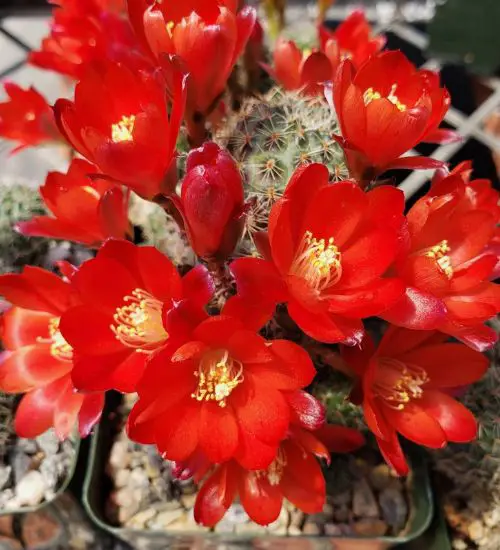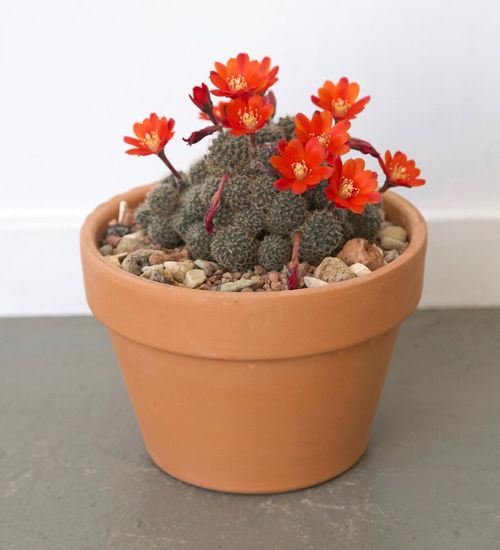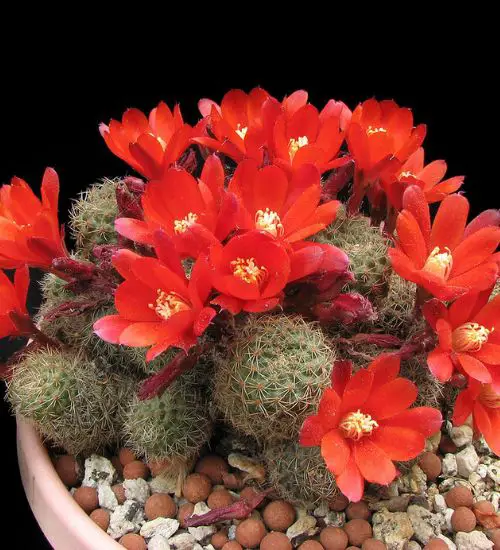Sun: Full sun to light shade
Water: Typical water needs for a succulent
Temperature:
Winter Survival: Not cold hardy
Propagation:
Flower:
Flower Type: Red
Toxic: Generally non-toxic to humans and animals
Dormant: winter
Space Requirement:
Common Problems:
Where to buy Rebutia sanguinea?
Basc Care for Rebutia sanguinea
Watering
Regular watering period should be every 2 weeks
You can water your succulent more than often in extreme conditions but make sure that the soil is completely dry before watering your succulent again.
Fertilizing
Only feed this succulent during its active growing seasons which means winter. Use the right fertilizer applied in the right amounts. Applying half-strength balanced fertilizer every month or so is recommended for optimal results.
Do not fertilize during winter as the plant is dormant.
Sun & Location Requirements for "Rebutia sanguinea"
Placing Rebutia sanguinea in full sun to light shade is key for its growth and health. Look for a spot that gets around 6 hours of direct sunlight each day, but also offers plenty of shade during the hottest parts of the day.
As per this succulent profile, it is only able to stay healthy when the environment temperature is above the range of %temperature_label%.
In order to protect Rebutia sanguinea from freezing temperatures, it is important to provide adequate insulation and drainage. A layer of mulch or gravel will help protect the roots by keeping them warm during cold weather. In addition, protection from wind and sun exposure can help reduce the chances of frost damage.
Rebutia sanguinea also benefits from some indirect light throughout the day as well, so make sure you give it enough space to soak up light without becoming too exposed to heat.
Propagation
Toxicity

Rebutia sanguinea is generally non-toxic to humans and animals. However, it is important to be aware that certain parts of the plant may contain toxins which can cause mild skin irritation. It is advised that you keep the plants away from small children or pets, as they may unknowingly ingest them and suffer ill effects.


